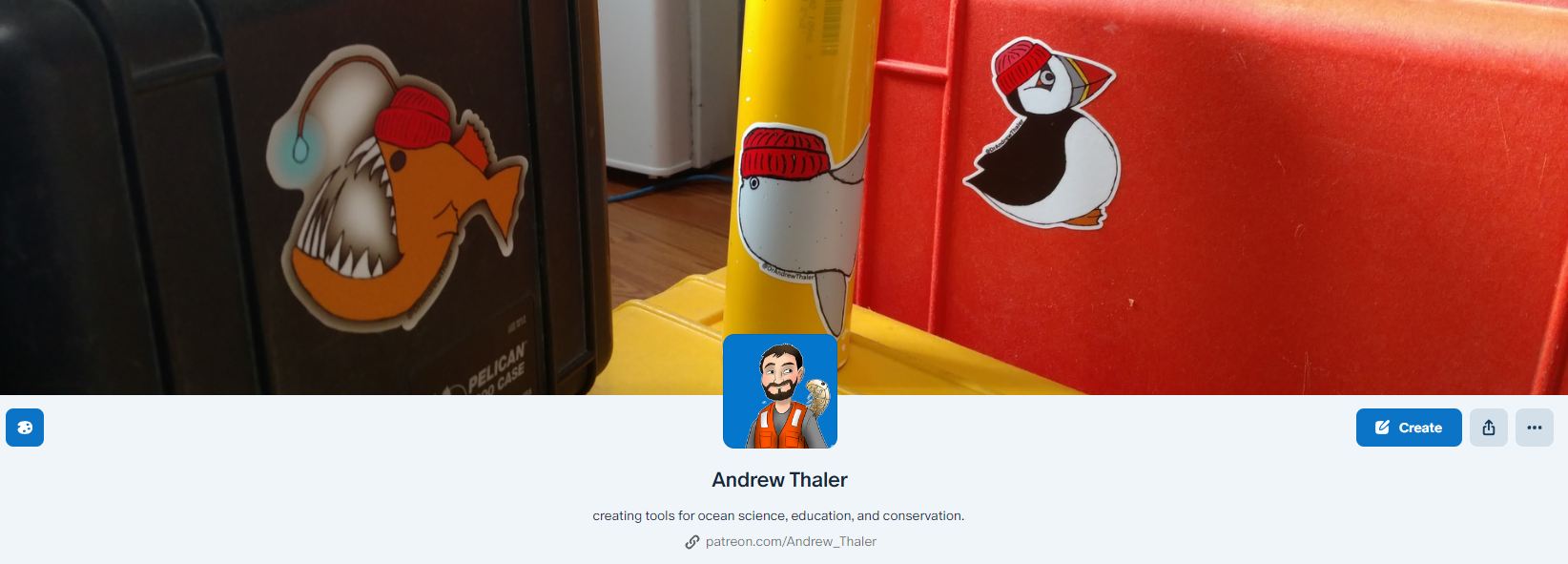Ten years ago, freshly married and freshly relocated to Vallejo, California, I found myself in the midst of reinvention. The cycle of post-doctoral fellowships and short-term contracts necessary for an academic career didn’t suit me. I wanted stability and, importantly, I wanted freedom.
Crowdfunding was new. Earlier that summer, OpenROV had shook the crowdfunding world by bringing in $111,000, at the time one of the biggest hauls in Kickstarter history. Kersey and I had just closed the first funding push for the OpenCTD. We had raised $6000. That wasn’t going to change the world, but, with the help of my friends at OpenROV and the addition of Russell Neches to the OpenCTD team, it was enough to keep the project going.

Zach and Kelly Weinersmith reached out to let me know about a new crowdfunding platform designed to provide continuous funding using a subscription model. Though conceived of as a hub for artists, writers, and other creators, it seemed like there could be a space for rogue scientists in the mix. I launched my Patreon in May, 2014.
The pitch was simple: I run Southern Fried Science, I develop the OpenCTD, I do science and conservation, largely independent from academic institutions. But I am also an advocate for open-source development and making science publicly accessible. I don’t put ads on Southern Fried Science. I don’t like walled gardens. There would be updates on Patreon, but nothing particularly exclusive. All my main work is free and public facing. If that’s you jam, kick in a few bucks towards keeping the servers running and the coffee flowing.
I am reasonably certain I was the first scientist to use Patreon to fund research. My account is still on the Patreon Founder’s Plan.
I’d love to say it was an immediate success. That first month brought in a whopping $67 (which, compared to the vast majority of Patreon campaigns, puts me at least in the top half of earners, then and now). The first year covered the server hosting fees and related services for Southern Fried Science. The second year sustained the website and bought hardware for the OpenCTD. Then we started making stickers, and things really took off. Over the last 10 years, I’ve raised a total of approximately $50,000 on Patreon (during most of 2020, I suspended the campaign).
Patreon support covered the preparation or publication fees for five open source papers, including the just published The OpenCTD: A Low-Cost, Open-Source CTD for Collecting Baseline Oceanographic Data in Coastal Waters, as well as:
- Fish tales: Combating fake science in popular media
- Robots as vectors for marine invasions: best practices for minimizing transmission of invasive species via observation-class ROVs
- Lions, Whales, and the Web: Transforming Moment Inertia into Conservation Action
- Bot Meets Whale: Best Practices for Mitigating Negative Interactions Between Marine Mammals and MicroROVs
This is not the story of how one big crowdfunding success reshaped my career. This is about how small drops make mighty oceans.
The OpenCTD was a pipe dream (the housing is literally schedule-40 PVC pipe). A few thousand dollars a year let us keep that dream alive. It let me dedicate a few days a month to research and development. It bought parts. Patreon funding allowed me to buy my first 3D printer. That little bit of seed funding, reliable and predictable, allowed us to grow the OpenCTD into an instrument we could be confident in, gave us the baseline to pursue more funding and bigger contracts. Without Patreon, there would be no OpenCTD.
When Hurricane Maria hit Dominica in 2017, it was Patreon support that allowed me to take the time to join in on an aid mission, delivering food, lights, and generators to the Island. That first trip laid the foundation for the conservation distillery project, for which Patreon also provided support to cover some of my time. I’m certain the Rosalie Bay Distillery would have happened with or without me, but thanks, in part, to support from Patreon, I was able to help make this vision a reality.
Last year, we crowdfunded another research project, this time looking at microplastic accumulation in the deep sea. Patreon support covered the cost of transporting those samples from North Carolina and provides ongoing support for the project, today.
Patreon also funded all of my weird little projects. I built a head-mounted LiDAR array that lets you see the world like a dolphin via vibrations sent through your jaw. I built a horrifying cyborg sea turtle hatchling so you can learn a little bit about behavioral ecology. I built an open-source robot that steps your steps when the steps you stepped weren’t counted by your step counter. And I wrote about why great conservation technology programs thrive on these weird little projects. None of the projects happen without Patreon, without a small but reliable source of funding that allows me to commit my time and resources to all the weird little ideas that can lead to bigger things.
The weird little projects, the small bit of seed funding to test ideas, the extra few thousand dollars that can be used to try something risky. Those little things can lead to big things. They all feed into a grander vision that: It is your ocean. You should have access to the tools to study it.
By just about any metric, the return on investment from Patreon exceeds, by an order of magnitude, just about an other funding I’ve received in the last decade. For most of us, we don’t need to move mountains, we just need the space to stop and breathe and create. Support from Patreon gave me that space.
